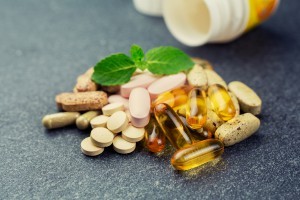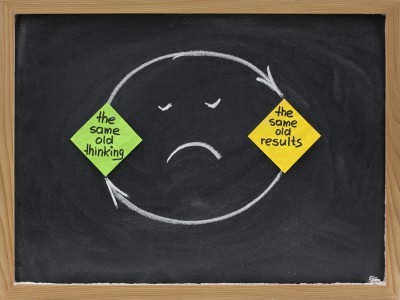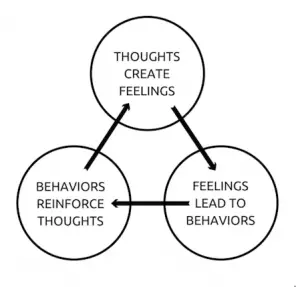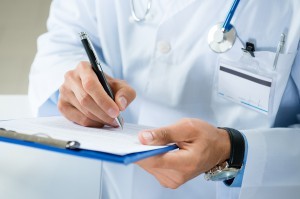The following is a list of natural supplements that may help ease the symptoms of depression. Many of these supplements can

be taken alongside other therapies (ie. with antidepressants – though, some can’t) Be sure to ask your doctor about drug and supplement interactions. The items on this list have been studied by researchers extensively. They’ve made the list because there is much evidence to support their effectiveness. If you are treated by a naturopathic doctor, many will suggest taking some or a combination of these supplements.
OMEGA-3 FATTY ACIDS:
These are acids from unsaturated fat that are found primarily in fish, but also in certain plant sources such as nuts and seeds. Two that are crucial for your health are called EPA and DHA. You can find omega-3 fatty acids as a supplement in most pharmacies and health food stores.
There have been numerous studies to conclude that omega-3 fatty acids are helpful in preventing and improving mild to moderate depression. One sizeable Norwegian study that included 22,000 participants revealed that participants who took cod liver oil (a source of omega-3) were approximately 30% less likely to have symptoms of depression than the group that did not.
Foods that have omega-3 fatty acids: Most types of fish (salmon and tuna have large amounts), flaxseeds and flaxseed oil, roe and caviar, chia seeds and walnuts.
VITAMIN B12, VITAMIN B6 and FOLATE:
Bestselling author Dr. Mark Hyman, calls folate, vitamin B6, and vitamin B-12 the “mighty methylators for mental health.” He suggests that one-quarter of all severely depressed people are vitamin B deficient. Most of them, he believes, can be cured with B12 shots, which can be taken as a mega-dose with a eye dropper.
Foods high in vitamin B-12: Clams, mussels, beef liver, mackerel, crab, tofu, eggs.
Foods high in vitamin B-6: Sunflower seeds, pistachios, tuna, turkey, prunes, lean pork, bananas, avocado.
Foods high in folate: Beans, lentils, spinach, asparagus, lettuce, avocado, broccoli, mango.
TURMERIC:
A spice that has been used for thousands of years in Chinese and Indian medicine to treat various medical issues. David Perlmutter, author of “Grain Brain”, suggests that your brain loves it. It is capable of crossing the blood-brain barrier, (which means when it’s eaten, the chemical goes through your bloodstream and into your brain, most substances do not do this). For this reason, it holds great promise to be neuroprotective agent. It may help treat and cure many neurological disorders.
It also produce antioxidants that protect mitochondria, which are a component of human cells that produce energy.
How to get more turmeric: Turmeric is an edible root, similar to ginger. If you want to get more into your diet you can buy it as a supplement or a spice. The spice can be added to many foods: soups, shakes, and scrambled eggs. Indian cooking uses a large amount of turmeric.
Vitamin D:
Having a deficiency of vitamin D can feel like depression. A great deal of published research has shown a correlation between depression and a lack of vitamin D. It’s suggested that this one of the reasons individuals may from depression in the winter months (this condition is often known as Seasonal Affective Disorder or SAD). During winter, there is less sun. Exposure to the sun allows human skin create to naturally produce vitamin D.
Foods with vitamin D: Cod liver oil supplements, oily types of fish (such as trout), mushrooms, tofu, fish, extra lean ham.
5-HTP (5-Hydroxytryptophan):
5-HTP is chemical by-product of one of the most important amino acids (there are 22 in total) called L-tryptophan, that are necessary components in the human diet. Your body can’t make L-tryptophan, so you need to get it from your diet. L-tryptophan is beneficial in building important proteins that are used by the body and essential for sustaining life.
5-HTP works increase the chemical serotonin in the brain. You’ll recall that serotonin is one of the chemicals targeted by certain antidepressants. It affects your sleep, appetite levels, mood and pain sensation. For this reason, research shows that taking 5-HTP supplements may improve depression. A dose of 50-3000 mg daily for two to four weeks has been found in many clinical studies to improve depression symptoms and be as effective as antidepressant medications.
It’s rare, but there are some people taking 5-HTP supplements that may get a disease called eosinophilia-myalgia syndrome (EMS). This is a serious condition that involves muscle tenderness (myalgia) and blood abnormalities (eosinophilia). You should consult a doctor before taking this over-the-counter supplement. It also can interact with some medications.
Foods with tryptophan: Poultry, chocolate, oats, dates, milk, yogurt, cottage cheese, chickpeas, bananas, sunflower seeds.
PROBIOTICS:
Probiotics are healthy bacteria that keep your digestive track healthy. And if you read the next section of this book on how your gut is connected to your brain, you’ll learn why it’s important ensure your digestive processes are functioning optimally. The nerve cells in your gut manufacture 90% percent of your body’s serotonin. Probiotics help keep the bacteria in your intestines healthy.
Foods rich in probiotics: Yogurt, miso, sauerkraut, kefir, pickles, tempeh.
SAMe (S-adenosylmethionine):
SAMe is a chemical that’s naturally produced by your body. Your body uses it to make various chemicals that play a major role in pain and depression.
The supplement you can buy is a synthetic form of the same substance. It’s been on the market in the U.S. since 1999. A 2002 review by the U.S. Agency for Healthcare Research and Quality suggested that SAM-e was equally as effective as antidepressants.
There are no food sources of SAMe. It must be taken as a supplement that can be purchased in most North American pharmacies.
Amino Acids:
All the molecules in your body are built from eight essential amino acids. We get them from food and they are important for building protein. Without adequate amino acids your brain can slow down, you can feel sluggish and have a low mood.
Foods high in amino acids: Avocado, leafy green vegetables, pumpkin seeds, chia seeds, figs, raisins and quinoa.
GABA:
GABA is an amino acid that acts as a chemical in the brain. When taken as a supplement it acts as a natural tranquilizer.
Many anti-anxiety medications target this brain communication pathway. When GABA is stimulated the result is a calm and relaxed the mood. It lowers anxiety and improves a depressed mood.
It’s also typically used to It promote lean muscle growth, burning fat, stabilize blood pressure and relieve pain.
GABA must be taken as a supplement. It is normally taken by placing it under the tongue.
MAGNESIUM:
Stress, caffeine, sugar, and alcohol can reduce the amount of magnesium in the body. It’s been suggested that increasing your intake of magnesium can help you better handle stress.
Foods high in magnesium: Leafy green vegetables, nuts, seeds, fish beans, whole grains, avocado, yogurt, bananas, dried fruit, dark chocolate.
MELATONIN:
Malfunctioning levels of a hormone found in your body, called melatonin, can dramatically affect your sleep-wake cycle. If you are having trouble sleeping, taking it as a supplement may help boost your mood. There has been research to suggest that individuals suffering from seasonal affective disorder may have lower than normal levels of melatonin.
Foods that help your body make melatonin: Tuna, halibut, salmon, raw garlic and pistachios.
ST.JOHN’S WORT:
St. John’s Wort is a yellow weed that grows in many regions of the United States. There are some studies that suggest it is effective in elevating mood, while others say it’s not. You should be aware that it it has been known to react badly with many antidepressant medications. Tell your doctor if you choose to take it.


